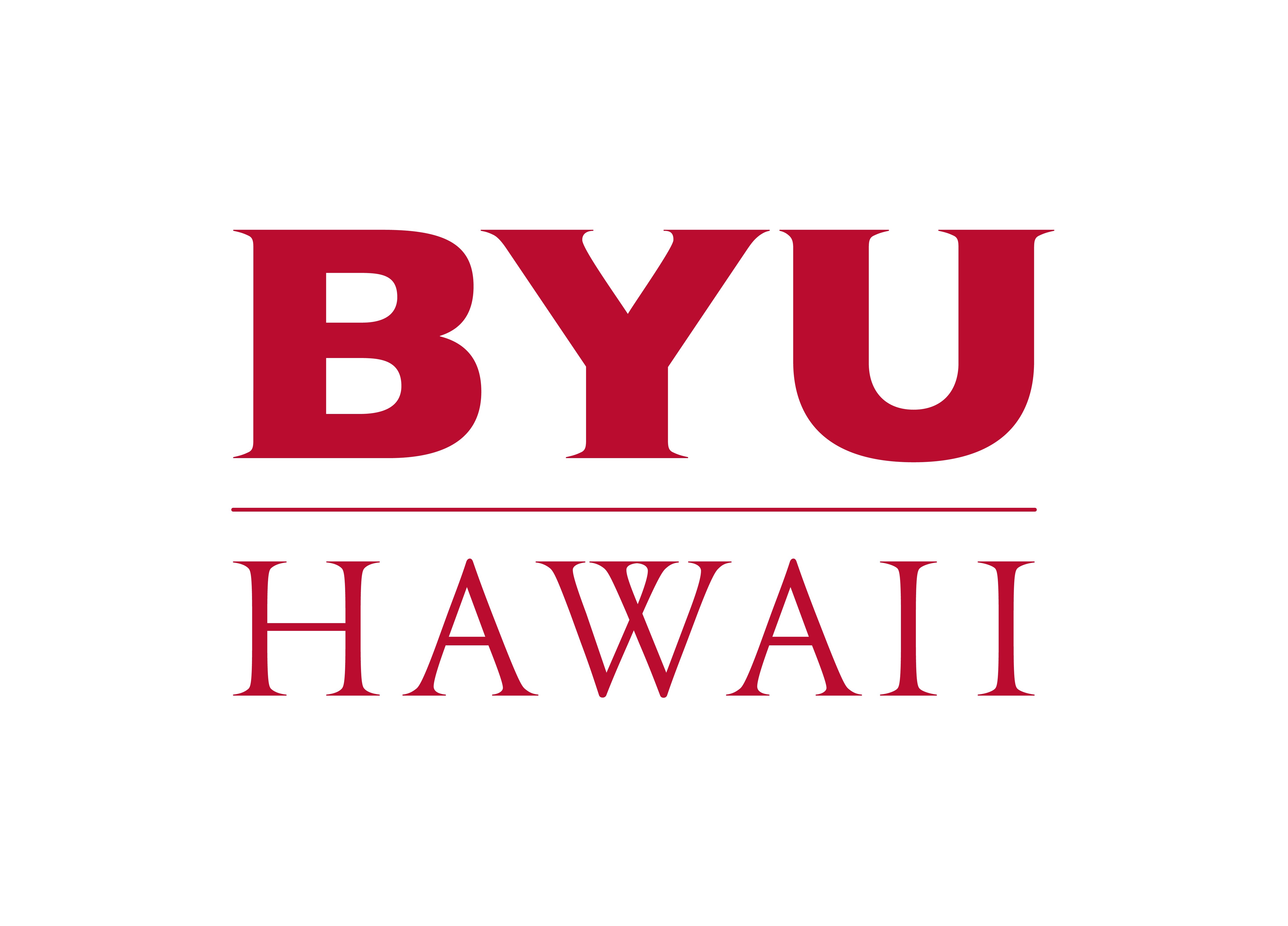The impact of and purposes for the 2012 academic calendar
Checketts related to attendees that President Gordon B. Hinckley gave three imperatives to President Steven C. Wheelwright when he was appointed as president of BYU–Hawaii: to serve more students, control the cost of education, and to improve the overall BYU–Hawaii experience.
The revised academic calendar
In the research, some professors and students expressed that it was difficult to cover all of the curriculum they were expected to teach and learn in only six weeks. The new semester will provide more options. It will allow professors to choose whether their class curriculum will be covered in one of the seven-week sessions, or be a “bridge course” and continue on after the five-week break for an additional seven weeks. While it is unusual to have a long break in the middle of a semester, this is based on the local public schools’ vacation schedule. As the previous Summer term had done, the Summer Break will offer a time for students to have a break from class and to allow faculty families to have time together.
Beginning in 2012, the new Summer semester will equate to 14 weeks of instruction. The new semester will have both full length classes and block (or “session”) classes. This change will not affect the Fall and Winter semesters but will combine the spring, summer and first terms into one semester. Classes during Summer semester may run for 14 weeks with a five-week break in the middle (a “bridge” class) or they could be offered as a seven-week session, a five-week break, followed by another seven-week session.
“One key objective is that we hope to offer many of the same opportunities you find in the Fall and Winter semesters, such as having more majors courses and 300- and 400-level courses during the Summer semester,” said Brother Checketts.
Other notable changes include the following:
-Every semester will begin on a Monday.
-All the semesters will be fourteen weeks long.
-Final exam period will be held for three days instead of two during Fall and Winter.
-During Summer semester, some courses will be offered in the first session only, others in the second session only, and others will bridge the break and be offered through the entire semester.
Some of the questions raised from the discussion:
Q: Will this change affect graduation dates?
A: No. BYU–Hawaii will still hold graduation in April and December; and as soon as there are enough graduates at the end of Summer semester, a third graduation may be added.
Q: If a student doesn’t attend Summer semester, will they have to reapply for admission to continue?
A: No. Details are still being worked out, but the hope is that students will only be required to reapply if they miss two consecutive semesters.
Q: Will attending two of the three semesters affect my eligibility to live in on- campus housing?
A: Yes, particularly with TVA. The previous rule was a 12-credit minimum per semester and 6 credits for 2 of the 3 terms. The new minimum for housing eligibility is a minimum of 12 credits per semester, but to give some flexibility for next Summer, the housing office plans to look at the total number of credits that a student has had throughout the 2011-2012 academic year, including First Term. That would provide some cushion for students with the new Summer semester.
“We turned away 1,600 students for Fall semester 2011,” said Brother Checketts, citing housing as the main limiting factor. “There are so many people out there who want to come to BYU–Hawaii and the other CES institutions, and we want to do everything we can to provide a BYU–Hawaii education and experience for as many of them as possible.”
Find out more information on the Academic Calendar and important dates at http://academics.byuh.edu/academicdates.

